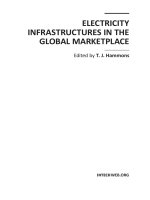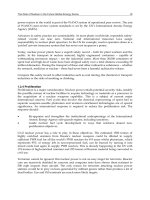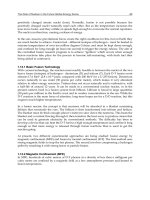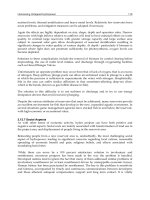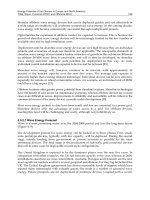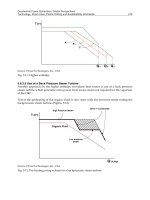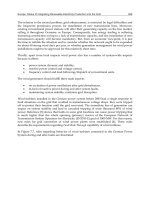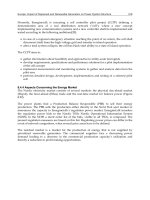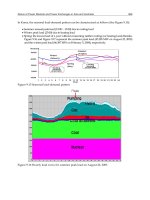international business completing in the global marketplace 83 charles wlhill
Bạn đang xem bản rút gọn của tài liệu. Xem và tải ngay bản đầy đủ của tài liệu tại đây (10.21 MB, 904 trang )
8E
International Business
COMPETING IN THE GLOBAL MARKETPLACE
8E
International Business
COMPETING IN THE GLOBAL MARKETPLACE
Charles W. L. Hill
UNIVERSITY OF WASHINGTON
INTERNATIONAL BUSINESS: COMPETING IN THE GLOBAL MARKETPLACE
Published by McGraw-Hill/Irwin, a business unit of The McGraw-Hill Companies, Inc., 1221
Avenue of the Americas, New York, NY, 10020. Copyright © 2011, 2009, 2007, 2005, 2003, 2000,
1997, 1994 by The McGraw-Hill Companies, Inc. All rights reserved. No part of this publication may be
reproduced or distributed in any form or by any means, or stored in a database or retrieval system,
without the prior written consent of The McGraw-Hill Companies, Inc., including, but not limited to, in
any network or other electronic storage or transmission, or broadcast for distance learning.
Some ancillaries, including electronic and print components, may not be available to customers
outside the United States.
This book is printed on acid-free paper.
1 2 3 4 5 6 7 8 9 0 DOW/DOW 1 0 9 8 7 6 5 4 3 2 1 0
ISBN 978-0-07-813719-8
MHID 0-07-813719-5
Vice president and editor-in-chief: Brent Gordon
Publisher: Paul Ducham
Executive editor: John Weimeister
Director of development: Ann Torbert
Development editor: Megan Richter
Vice president and director of marketing: Robin J. Zwettler
Senior marketing manager: Anke Braun Weekes
Vice president of editing, design and production: Sesha Bolisetty
Senior project manager: Bruce Gin
Senior production supervisor: Debra R. Sylvester
Interior designer: Cara Hawthorne, cara david DESIGN
Senior photo research coordinator: Jeremy Cheshareck
Photo researcher: Keri Johnson
Senior media project manager: Joyce Chappetto
Cover design: Cara Hawthorne, cara david DESIGN
Typeface: 10.5/12 Goudy
Compositor: Aptara®, Inc.
Printer: R. R. Donnelley
Library of Congress Cataloging-in-Publication Data
Hill, Charles W. L.
International business: competing in the global marketplace/Charles W. L. Hill.—8th ed.
p. cm.
Includes index.
ISBN-13: 978-0-07-813719-8 (alk. paper)
ISBN-10: 0-07-813719-5 (alk. paper)
1. International business enterprises—Management. 2. Competition, International. I. Title.
HD62.4.H55 2011
658’.049—dc22
2009033378
www.mhhe.com
For June &
Mike Hill, my parents
about the AUTHOR
Charles W. L. Hill University of Washington
Charles W. L. Hill is the Hughes M. Blake Professor of International Business at the School of
Business, University of Washington. Professor Hill received his Ph.D. from the University of
Manchester’s Institute of Science and Technology (UMIST) in Britain. In addition to the University of
Washington, he has served on the faculties of UMIST, Texas A&M University, and Michigan State
University.
Professor Hill has published over 50 articles in peer-reviewed academic journals, including the
Academy of Management Journal, Academy of Management Review,
Strategic Management Journal, and Organization Science. He has also published two college texts:
one on strategic management and the other on international business. Professor Hill has served on the
editorial boards of several academic journals, including the Strategic Management Journal and
Organization Science. Between 1993 and 1996 he was consulting editor at the Academy of Management
Review.
Professor Hill teaches in the MBA, Executive MBA, Management, and Ph.D. programs at the
University of Washington. He has received awards for teaching excellence in the MBA, Executive MBA,
and Management programs. He has also taught customized executive programs.
Professor Hill works on a consulting basis with a number of organizations. His clients have included
ATL, Boeing, BF Goodrich, Hexcel, House of Fraser, Microsoft, Seattle City Light, Tacoma City Light,
Thompson Financial Services, and Wizards of the Coast.
brief CONTENTS
part one Introduction and Overview
Chapter 1 Globalization
part two Country Differences
Chapter 2 National Differences in Political Economy
Chapter 3 Differences in Culture
Chapter 4 Ethics in International Business
Cases: Google in China
Mired in Corruption—Kellogg, Brown & Root in Nigeria
part three The Global Trade and Investment Environment
Chapter 5 International Trade Theory
Chapter 6 The Political Economy of International Trade
Chapter 7 Foreign Direct Investment
Chapter 8 Regional Economic Integration
Cases NAFTA and the U.S. Textile Industry
Martin’s Textiles
Agricultural Subsidies and Development
Boeing versus Airbus
Starbucks Foreign Direct Investment
part four The Global Monetary System
Chapter 9 The Foreign Exchange Market
Chapter 10 The International Monetary System
Chapter 11 The Global Capital Market
Case Argentina’s Monetary Crisis
part five The Strategy and Structure of International Business
Chapter 12 The Strategy of International Business
Chapter 13 The Organization of International Business
Chapter 14 Entry Strategy and Strategic Alliances
Cases The Global Automobile Industry in 2009
IKEA: Furniture Retailer to the World
Downey’s Soup
part six International Business Operations
Chapter 15 Exporting, Importing, and Countertrade
Chapter 16 Global Production, Outsourcing, and Logistics
Chapter 17 Global Marketing and R&D
Chapter 18 Global Human Resource Management
Chapter 19 Accounting in the International Business
Chapter 20 Financial Management in the International Business
Cases Li & Fung
Castrol Oil in Vietnam
China Mobile
Glossary
Photo Credits
Index
CONTENTS
part one Introduction and Overview
CHAPTER 1 Globalization
Opening Case The Globalization of Health Care
Introduction
What Is Globalization?
The Globalization of Markets
The Globalization of Production
Management Focus
Vizio and the Market for Flat Panel TVs
The Emergence of Global Institutions
Drivers of Globalization
Declining Trade and Investment Barriers
The Role of Technological Change
Microprocessors and Telecommunications
The Changing Demographics of the Global Economy
The Changing World Output and World Trade Picture
Country Focus
India’s Software Sector
The Changing Foreign Direct Investment Picture
The Changing Nature of the Multinational Enterprise
Management Focus
China’s Hisense—An Emerging Multinational
The Changing World Order
The Global Economy of the 21st Century
The Globalization Debate
Antiglobalization Protests
Globalization, Jobs, and Income
Country Focus
Protesting Globalization in France
Globalization, Labor Policies, and the Environment
Globalization and National Sovereignty
Globalization and the World’s Poor
Managing in the Global Marketplace
Chapter Summary
Critical Thinking and Discussion Questions
Research Task
Closing Case Globalization at General Electric
part two Country Differences
CHAPTER 2 National Differences in Political Economy
Opening Case Egypt, the Troubled Giant
Introduction
Political Systems
Collectivism and Individualism
Democracy and Totalitarianism
Country Focus
Chavez’s Venezuela
Economic Systems
Market Economy
Command Economy
Mixed Economy
Legal Systems
Different Legal Systems
Differences in Contract Law
Property Rights and Corruption
Country Focus
Corruption in Nigeria
The Protection of Intellectual Property
Product Safety and Liability
Management Focus
Starbucks Wins Key Trademark Case in China
The Determinants of Economic Development
Differences in Economic Development
Broader Conceptions of Development: Amartya Sen
Political Economy and Economic Progress
Country Focus
Emerging Property Rights in China
Geography, Education, and Economic Development
States in Transition
The Spread of Democracy
The New World Order and Global Terrorism
The Spread of Market-Based Systems
The Nature of Economic Transformation
Deregulation
Privatization
Legal Systems
Implications of Changing Political Economy
Implications for Managers
Chapter Summary
Critical Thinking and Discussion Questions
Research Task
Closing Case India’s Transformation
CHAPTER 3 Differences in Culture
Opening Case McDonald’s in India
Introduction
What Is Culture?
Values and Norms
Culture, Society, and the Nation-State
The Determinants of Culture
Social Structure
Individuals and Groups
Social Stratification
Country Focus
Breaking India’s Caste System
Religious and Ethical Systems
Christianity
Islam
Country Focus
Islamic Capitalism in Turkey
Hinduism
Buddhism
Confucianism
Management Focus
DMG-Shanghai
Language
Spoken Language
Unspoken Language
Education
Culture and the Workplace
Cultural Change
Implications for Managers
Chapter Summary
Critical Thinking and Discussion Questions
Research Task
Closing Case Wal-Mart’s Foreign Expansion
CHAPTER 4 Ethics in International Business
Opening Case Siemens Bribery Scandal
Introduction
Ethical Issues in International Business
Employment Practices
Human Rights
Management Focus
Making Apple’s iPod
Environmental Pollution
Corruption
Management Focus
Unocal in Myanmar
Moral Obligations
Ethical Dilemmas
The Roots of Unethical Behavior
Personal Ethics
Decision-Making Processes
Organization Culture
Unrealistic Performance Expectations
Management Focus
Pfizer’s Drug-Testing Strategy in Nigeria
Leadership
Philosophical Approaches to Ethics
Straw Men
Utilitarian and Kantian Ethics
Rights Theories
Justice Theories
Implications for Managers
Chapter Summary
Critical Thinking and Discussion Questions
Research Task
Closing Case Wal-Mart’s Chinese Suppliers
Part Two Cases
Google in China
Mired in Corruption—Kellogg, Brown & Root in Nigeria
part three The Global Trade and Investment Environment
CHAPTER 5 International Trade Theory
Opening Case Bangladesh’s Textile Trade
Introduction
An Overview of Trade Theory
The Benefits of Trade
The Pattern of International Trade
Trade Theory and Government Policy
Mercantilism
Absolute Advantage
Country Focus
Is China a Neo-Mercantilist Nation?
Comparative Advantage
The Gains from Trade
Qualifications and Assumptions
Extensions of the Ricardian Model
Country Focus
Moving U.S. White-Collar Jobs Offshore
Heckscher-Ohlin Theory
The Leontief Paradox
The Product Life-Cycle Theory
Evaluating the Product Life-Cycle Theory
New Trade Theory
Increasing Product Variety and Reducing Costs
Economies of Scale, First-Mover Advantages, and the Pattern of Trade
Implications of New Trade Theory
National Competitive Advantage: Porter’s Diamond
Factor Endowments
Demand Conditions
Related and Supporting Industries
Firm Strategy, Structure, and Rivalry
Evaluating Porter’s Theory
Management Focus
The Rise of Finland’s Nokia
Implications for Managers
Chapter Summary
Critical Thinking and Discussion Questions
Research Task
Closing Case The Ecuadoran Rose Industry
Appendix
International Trade and the Balance of Payments
CHAPTER 6 The Political Economy of International Trade
Opening Case The Global Financial Crisis and Protectionism
Introduction
Instruments of Trade Policy
Tariffs
Subsidies
Country Focus
Subsidized Wheat Production in Japan
Import Quotas and Voluntary Export Restraints
Local Content Requirements
Administrative Policies
Management Focus
U.S. Magnesium Seeks Protection
Antidumping Policies
The Case for Government Intervention
Political Arguments for Intervention
Economic Arguments for Intervention
Country Focus
Trade in Hormone-Treated Beef
The Revised Case for Free Trade
Retaliation and Trade War
Domestic Policies
Development of the World Trading System
From Smith to the Great Depression
1947–1979: GATT, Trade Liberalization, and Economic Growth
1980–1993: Protectionist Trends
The Uruguay Round and the World Trade Organization
WTO: Experience to Date
The Future of the WTO: Unresolved Issues and the Doha Round
Country Focus
Estimating the Gains from Trade for America
Implications for Managers
Chapter Summary
Critical Thinking and Discussion Questions
Research Task
Closing Case Why Did Global Food Prices Rise?
CHAPTER 7 Foreign Direct Investment
Opening Case Spain’s Telefonica
Introduction
Foreign Direct Investment in the World Economy
Trends in FDI
The Direction of FDI
Country Focus
Foreign Direct Investment in China
The Source of FDI
The Form of FDI: Acquisitions versus Greenfield Investments
The Shift to Services
Theories of Foreign Direct Investment
Why Foreign Direct Investment?
Management Focus
Foreign Direct Investment by Cemex
The Pattern of Foreign Direct Investment
The Eclectic Paradigm
Political Ideology and Foreign Direct Investment
The Radical View
The Free Market View
Pragmatic Nationalism
Shifting Ideology
Management Focus
DP World and the United States
Benefits and Costs of FDI
Host-Country Benefits
Host-Country Costs
Home-Country Benefits
Home-Country Costs
International Trade Theory and FDI
Government Policy Instruments and FDI
Home-Country Policies
Host-Country Policies
International Institutions and the Liberalization of FDI
Implications for Managers
Chapter Summary
Critical Thinking and Discussion Questions
Research Task
Closing Case Lakshmi Mittal and the Growth of Mittal Steel
CHAPTER 8 Regional Economic Integration
Opening Case NAFTA and Mexican Trucking
Introduction
Levels of Economic Integration
The Case for Regional Integration
The Economic Case for Integration
The Political Case for Integration
Impediments to Integration
The Case against Regional Integration
Regional Economic Integration in Europe
Evolution of the European Union
Political Structure of the European Union
Management Focus
The European Commission and Media Industry Mergers
The Single European Act
Country Focus
Creating a Single European Market in Financial Services
The Establishment of the Euro
Enlargement of the European Union
Regional Economic Integration in the Americas
The North American Free Trade Agreement
The Andean Community
MERCOSUR
Central American Common Market, CAFTA, and CARICOM
Free Trade Area of the Americas
Regional Economic Integration Elsewhere
Association of Southeast Asian Nations
Asia-Pacific Economic Cooperation
Regional Trade Blocs in Africa
Implications for Managers
Chapter Summary
Critical Thinking and Discussion Questions
Research Task
Closing Case The Euro Energy Market
Part Three Cases
NAFTA and the U.S. Textile Industry
Martin’s Textiles
Agricultural Subsidies and Development
Boeing versus Airbus
Starbucks Foreign Direct Investment
part four The Global Monetary System
CHAPTER 9 The Foreign Exchange Market
Opening Case Caterpillar Tractor
Introduction
The Function of the Foreign Exchange Market
Currency Conversion
Insuring against Foreign Exchange Risk
Management Focus
Volkswagen’s Hedging Strategy
The Nature of the Foreign Exchange Market
Economic Theories of Exchange Rate Determination
Prices and Exchange Rates
Country Focus
Anatomy of a Currency Crisis
Summary
Exchange Rate Forecasting
The Efficient Market School
The Inefficient Market School
Approaches to Forecasting
Currency Convertibility
Implications for Managers
Management Focus
Dealing with the Rising Euro
Reducing Economic Exposure
Other Steps for Managing Foreign Exchange Risk
Chapter Summary
Critical Thinking and Discussion Questions
Research Task
Closing Case Hyundai and Kia
CHAPTER 10 The International Monetary System
Opening Case Economic Turmoil in Latvia
Introduction
The Gold Standard
Mechanics of the Gold Standard
Strength of the Gold Standard
The Period between the Wars, 1918–1939
The Bretton Woods System
The Role of the IMF
The Role of the World Bank
The Collapse of the Fixed Exchange Rate System
The Floating Exchange Rate Regime
The Jamaica Agreement
Exchange Rates since 1973
Fixed versus Floating Exchange Rates
Country Focus
The U.S. Dollar, Oil Prices, and Recycling Petrodollars
The Case for Floating Exchange Rates
The Case for Fixed Exchange Rates
Who Is Right?
Exchange Rate Regimes in Practice
Pegged Exchange Rates
Currency Boards
IMF Crisis Management
Financial Crises in the Post–Bretton Woods Era
Mexican Currency Crisis of 1995
The Asian Crisis
Evaluating the IMF’s Policy Prescriptions
Country Focus
Turkey and the IMF
Implications for Managers
Management Focus
Airbus and the Euro
Chapter Summary
Critical Thinking and Discussion Questions
Research Task
Closing Case China’s Managed Float
CHAPTER 11 The Global Capital Market
Opening Case Global Capital Markets in Crisis
Introduction
Benefits of the Global Capital Market
Functions of a Generic Capital Market
Attractions of the Global Capital Market
Management Focus
Deutsche Telekom Taps the Global Capital Market
Growth of the Global Capital Market
Global Capital Market Risks
Country Focus
Did the Global Capital Markets Fail Mexico?
The Eurocurrency Market
Genesis and Growth of the Market
Attractions of the Eurocurrency Market
Drawbacks of the Eurocurrency Market

